Candlebrook Adds Dormitories With $230 Million Purchase
November 05, 2014 —
John Gittelsohn - BloombergCandlebrook Properties LLC, a closely held company with about 5,000 apartments in the eastern U.S., is diversifying into student housing with the $230 million acquisition of five off-campus properties.
Candlebrook joined with Lubert-Adler Partners on the purchase of buildings with about 3,400 beds near colleges in Georgia, Indiana, Kentucky and Virginia. Formerly known as Vantage Properties LLC, Candlebrook began as an investor in New York City apartments in 2005 and later expanded to New Jersey and the Philadelphia area.
“Student housing is a natural extension of our pre-existing business line,” Neil Rubler, president of New York-based Candlebrook, said in a telephone interview. It’s “a business that’s far less crowded than multifamily, which has been our core business.”
Capitalization rates on apartments, a measure of profitability, have dropped as investors drive up property prices. Student housing has become an attractive alternative, luring homebuilder Toll Brothers Inc. (TOL) and private-equity firm Colony Capital LLC to an industry already home to real estate investment trusts American Campus Communities Inc. (ACC), Campus Crest Communities Inc. (CCG) and Educational Realty Trust Inc. (EDR)
Read the court decisionRead the full story...Reprinted courtesy of
John Gittelsohn, BloombergMr. Gittelsohn may be contacted at
johngitt@bloomberg.net
Brooklyn’s Hipster Economy Challenges Manhattan Supremacy
April 08, 2014 —
Henry Goldman – BloombergMarty Markowitz was strolling in Vienna when he noticed mannequins in a shop window wearing hats emblazoned with Paris, London and Brooklyn. The store had plenty of London and Paris models. Brooklyn was sold out.
“They said they couldn’t restock the Brooklyn hats fast enough,” said Markowitz, 69, who spent 12 years as president of New York City’s most populous borough before retiring in January.
Brooklyn’s cachet as a global brand and epitome of urban hipsterdom is shifting New York City’s center of gravity, reducing the supremacy of Manhattan across the East River and exerting more influence on New York’s political, economic and cultural life. It’s creating jobs and adding residents at a faster pace than any other borough, sparking a boom in commercial development to supply the new masses.
Read the court decisionRead the full story...Reprinted courtesy of
Henry Goldman, BloombergMr. Goldman may be contacted at
hgoldman@bloomberg.net
Illinois Court Determines Duty to Defend Construction Defect Claims
March 22, 2021 —
Tred R. Eyerly - Insurance Law HawaiiGiven the underlying allegations of damage to personal property, the court determined the insurer had a duty to defend. Certain Underwriters at Lloyd's London v. Metropolitan Builders, Inc., 2019 Ill. App. LEXIS 979 (Ill. Ct. App. Dec. 18, 2019).
Metropolitan was hired as the general contractor for construction, renovation and demolition at contiguous properties - the 1907 Property, 1909 Property, and 1911 Property. During construction activities, the structures on the 1907 Property and 1909 Property collapsed. The existing structures on the properties were later deemed unsafe and were demolished by the city of Chicago.
AIG insured the owner of the buildings and paid over $1.8 million for repairs and associated expenses arising from the collapse. AIG then invoked its rights of subrogation against Metropolitan by filing suit. Metropolitan tendered the suit to its insurer, Lloyd's, who denied coverage and filed for a declaratory judgment. The trial court found the underlying complaint alleged property damage, but not an occurrence. Summary judgment was awarded to Lloyd's.
Read the court decisionRead the full story...Reprinted courtesy of
Tred R. Eyerly, Damon Key Leong Kupchak HastertMr. Eyerly may be contacted at
te@hawaiilawyer.com
Arctic Fires Are Melting Permafrost That Keeps Carbon Underground
December 27, 2021 —
Eric Roston - BloombergFew things signal something's gone haywire on the planet quite like frozen land on fire. Now scientists have determined that Arctic fires, even milder ones, can reshape a landscape for decades, in ways that may make it even harder to keep global heating from eclipsing international goals.
It's mostly rising temperatures that are thawing out frozen Arctic ground but northern blazes — already increasing — are now understood to play a disproportionate role, according to a study
published last week in the journal
One Earth.
Previous research has shown that higher temperatures, drier soil and more lightning storms will lead to
more fires. That work, with the new paper, mean that “in the future we might expect to see an outsized influence on thaw from the fires that will likely increase," said Róisín Commane, a Columbia University assistant professor who studies atmospheric composition and wasn’t involved in the new study.
Read the court decisionRead the full story...Reprinted courtesy of
Eric Roston, Bloomberg
Certificates of Merit: Is Your Texas Certificate Sufficient?
January 22, 2024 —
Gus Sara - The Subrogation StrategistIn Eric L. Davis Eng’g, Inc. v. Hegemeyer, No. 14-22-00657-CV, 2023 Tex. App. LEXIS 8899, the Court of Appeals of Texas (Court of Appeals) considered whether the plaintiffs’ certificate of merit, in support of their professional malpractice claim against the defendant engineers, adequately set forth the experience and qualifications of the expert who submitted the certificate. The defendants filed a motion to dismiss, alleging that the certificate of merit was inadequate because it failed to establish that the expert practiced in the same specific areas as the defendants in relation to the work at issue. The lower court denied the defendants’ motion. The Court of Appeals affirmed the lower court’s decision, finding that there was sufficient information for the lower court to have reasonably found that the plaintiffs’ expert practiced in the same area as the defendants.
In Hegemeyer, the plaintiffs sued Eric L. Davis Engineering, Inc. (Davis) and Kenneth L. Douglass (Douglass), alleging improper design of their home’s foundation. The plaintiffs retained Davis to design and engineer the home and Douglass prepared the plans for the home. The plans called for the installation of post-tension cables in the home’s foundation. The plaintiffs alleged that the foundation design was improper and brought professional malpractice claims against Davis and Douglass.
Read the court decisionRead the full story...Reprinted courtesy of
Gus Sara, White and WilliamsMr. Sara may be contacted at
sarag@whiteandwilliams.com
20 Years of BHA at West Coast Casualty's CD Seminar: Chronicling BHA's Innovative Exhibits
May 03, 2018 —
Beverley BevenFlorez-CDJ STAFFThe Bert L. Howe & Associates, Inc., (BHA) exhibit has been a fixture at West Coast Casualty's Construction Defect Seminar since the mid-1990's. Through the years, BHA has updated their display, but no matter what year, you could count on the BHA exhibit to provide a not-to-be-missed experience.
2008-BHA's sleek, rear projection display includes a screen that promotes the firm's capabilities that can be seen throughout the exhibit hall. This would be one of many innovations BHA has brought to the West Coast Casualty seminar.
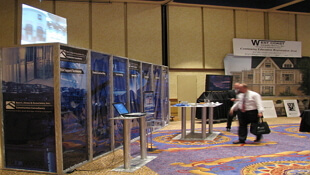
2009-With the success of the rear screen projection, BHA adds additional monitors to provide attendees with more information about BHA.
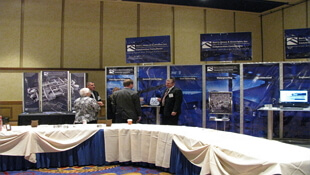
2010-BHA adds an interpretive professional development exhibit targeted to Building Envelope issues allowing adjusters and other non-construction professionals hands on access to the systems and components at the heart of many related such claims.



2011-BHA's Swing for Charity challenge is born.

2012-Always innovating, BHA expands its rear projection and professional development offerings to West Coast attendees.

2013-BHA showcases additional capabilities with a twenty-four foot, custom, convex, immersive video experience.

2014-BHA adds an iPhone display to give a hands-on demonstration of their data collection methods.
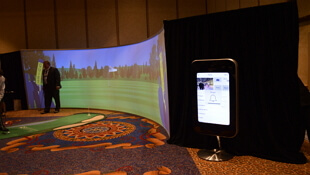
2015-BHA's twenty-four foot , custom, convex, immersive video experience was elevated with two additional rear projection screens, reflecting BHA's newest capabilities and services.

2016-BHA dazzles attendees with their new exhibit comprised of more than 15 integrated, high definition, LCD displays. iPads are stationed on tables to conveniently demonstrate BHA's data collection processes.
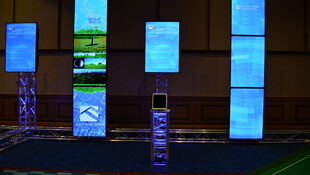
2017-BHA's Swing for Charity Golf Challenge raised $2,225.00 for the National Coalition for Homeless Veterans and $1,900 for Final Salute.
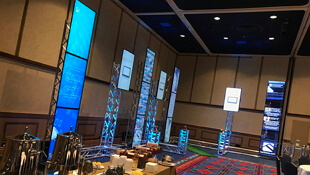
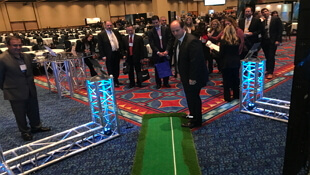
Read the court decisionRead the full story...Reprinted courtesy of
Construction Contract Basics: No Damages for Delay
May 06, 2024 —
Christopher G. Hill - Construction Law MusingsAfter WAY too long a hiatus, I am back with another in my series of “Construction Contract Basics” posts. In past posts, I’ve covered venue provisions, attorney fee provisions, and indemnity clauses. In this post, I’ll share a few thoughts (or “musings”) on the topic of so-called “no damages for delay” clauses. These clauses essentially state that a subcontractor’s only remedy for a delay caused by any factor beyond its control (including the fault of the general contractor), after proper notice to the owner or general contractor, is an extension of time to complete the work.
These types of clauses generally make it impossible for a subcontractor (if found in a Subcontract) or Contractor (if found in a Prime Contract) that is delayed through no fault of its own to recover any damages relating to the expenses that are inevitably caused by such delays. Such expenses/damages could include additional supervisory time (including more high-dollar superintendent payments), acceleration costs, demobilization/mobilization costs, and other related expenses. These can add up to real money. Couple that with the inevitable liquidated damages or delay damages that will occur should a contractor or subcontractor cause any delay, and this becomes a very one-sided proposition.
Read the court decisionRead the full story...Reprinted courtesy of
The Law Office of Christopher G. HillMr. Hill may be contacted at
chrisghill@constructionlawva.com
Where Do We Go From Here?
March 21, 2022 —
Christopher G. Hill - Construction Law MusingsGreen Builder CoalitionFor this week’s Guest Post Friday, I welcome an old friend and past Guest Post Friday contributor, Mike Collignon. Mike is the Co-Founder and Executive Director of the Green Builder® Coalition. He engages in national and state-level advocacy and publishes regular content for Green Builder® Media. Mike is also the Chair of the WERS Development Group and has served as the moderator or host for Green Builder® Media’s Impact Series webinars from 2012– present.
This post originally appeared on Green Builder® Media’s Code Watcher.
Do you ever have a line from a song just pop into your head? I get that… a lot. It’s probably due to my lifelong love of music. Anyway, while I was researching this column, the line that cites the title of “Where Do We Go From Here?” by Filter started playing between my ears. You’ll see why in a couple of minutes.
In case you didn’t
read about it here or elsewhere, the IECC development process has undergone an overhaul. It is now following a standards process, yet it retains the word “code” in the name. The residential committee (which is the scope of this column) is now a consensus committee and has been greatly expanded. Proposals are still submitted, reviewed and voted on by the committee. On the surface, it doesn’t sound like much has changed. As they say, the devil is always in the details.
Read the court decisionRead the full story...Reprinted courtesy of
The Law Office of Christopher G. HillMr. Hill may be contacted at
chrisghill@constructionlawva.com




































































